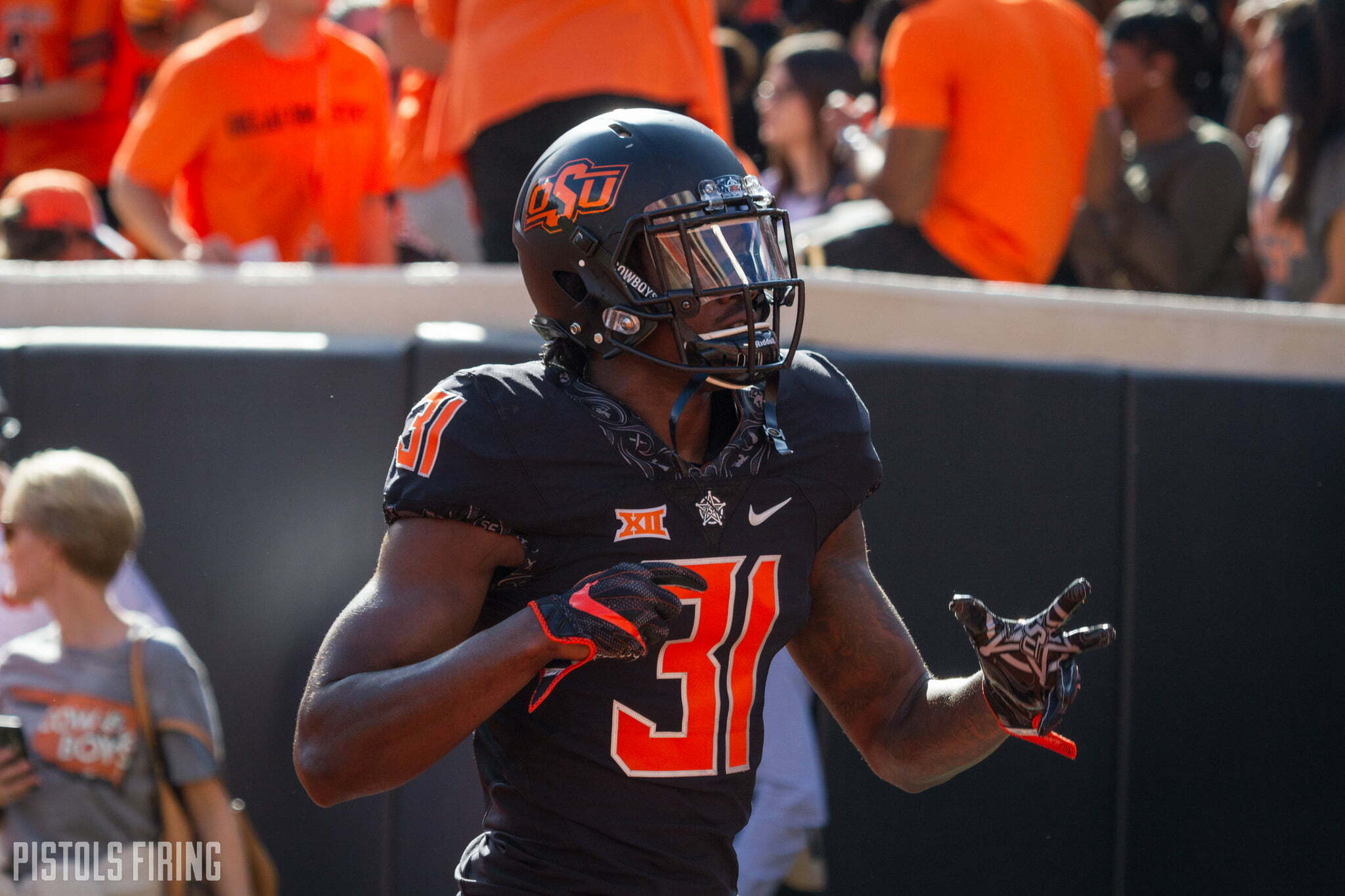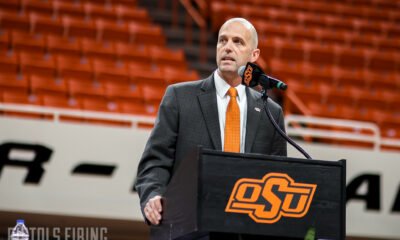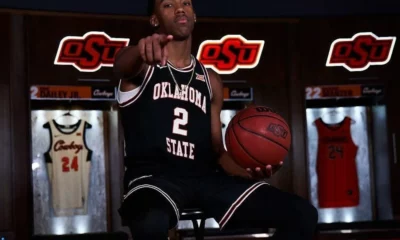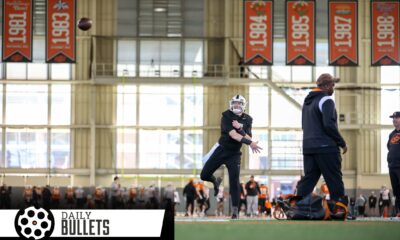Football
What College Football Rule Would Mike Gundy Change for 2018?

I am confused about a lot of things when it comes to college football. I don’t know what the criteria for the CFP are (other than having buckeye stickers on your lid). I don’t know what a catch is. And I don’t know what targeting is.
I’m not alone.
First, the catch rule just for fun because it was so egregious.
HE LITERALLY TOOK NINE STEPS WITH THE BALL pic.twitter.com/EDGsgFNkp6
— Pistols Firing (@pistolsguys) November 4, 2017
Whatever, I’m over that (no I’m not). But let’s move on to the targeting rule.
OSU has been flagged for it with the calls upheld twice this season. We’ll look at both of those as well as the one in Bedlam against the Sooners.
The first was Calvin Bundage against South Alabama. Many people were angry. I actually thought it was the right call and a good one (and probably an obvious one).
Calvin Bundage called for targeting. ? pic.twitter.com/cOk93hgnwJ
— Pistols Firing (@pistolsguys) September 9, 2017
Then there was the one against OSU late in Bedlam. Still probably a good call, but a less obvious one than Bundage.
And finally, on Saturday, Tre Flowers got tossed and will miss part of the Kansas State game on Saturday in Stillwater.
Gundy said on Monday that if he could pick a rule to change, it would be this one.
“I don’t know that I’m a big fan of these targeting rules,” said Gundy on the Big 12 media call. “As I watch it, I don’t see players intentionally trying to target. It’s because there’s such a severe penalty, I understand that, but there’s still the human element that’s making huge mistakes in deciding what a targeting actually is. I’m not real fond of that rule at this particular time.”
I think Gundy probably has a lot of advocates here, mostly because it seems so open for interpretation. The Bundage hit, I understand. Same with the OU hit in Bedlam (to a lesser extent). But the Flowers hit in Ames? I thought, come on. Until I read the rule. According to the actual rule, Flowers attacked the neck area of an opponent.
Here’s the official rule with some commentary from SB Nation.
Too often, a targeting call that results in the standard 15-yard penalty and automatic ejection leaves fans pointing out a lack of helmet contact, but the rules do not specifically require it. A helmet-to-helmet hit can be a targeting foul, but all targeting fouls are not helmet-to-helmet hits.
From the 2016 NCAA football rulebook, language that is unchanged from previous years (my emphasis added throughout):
No player shall target and make forcible contact against an opponent with the crown (top) of his helmet. This foul requires that there be at least one indicator of targeting (See Note 1 below). When in question, it is a foul.
This specifies a hit with the top of the helmet, but not necessarily a hit to the opponent’s helmet.
No player shall target and make forcible contact to the head or neck area of a defenseless opponent (See Note 2 below) with the helmet, forearm, hand, fist, elbow or shoulder. This foul requires that there be at least one indicator of targeting (See Note 1 below). When in question, it is a foul (Rules 2-27-14 and 9-6). (A.R. 9-1-4-I-VI)
Note 1: “Targeting” means that a player takes aim at an opponent for purposes of attacking with forcible contact that goes beyond making a legal tackle or a legal block or playing the ball. Some indicators of targeting include but are not limited to:
- Launch—a player leaving his feet to attack an opponent by an upward and forward thrust of the body to make forcible contact in the head or neck area
- A crouch followed by an upward and forward thrust to attack with forcible contact at the head or neck area, even though one or both feet are still on the ground
- Leading with helmet, shoulder, forearm, fist, hand or elbow to attack with forcible contact at the head or neck area
- Lowering the head before attacking by initiating forcible contact with the crown of the helmet
The problem, obviously, is that no two hits are the same. Some are obvious (Bundage), some are less so (Flowers). One degree of difference in the way a player tackles can make all the difference between missing parts of two games and an incomplete pass. It’s pretty crazy, and difficult to both coach and ascertain.
I’m all for any rule that makes this ludicrous game much safer for those playing it so I tend to err on the side of “most targeting calls should be upheld and more should be called generally,” but it has to be frustrating as a coach to not know when your starting safety is going to walk back in the huddle and when he’s going to be out until halftime of the next game.

-

 Football4 days ago
Football4 days agoFour-Star Quarterback Adam Schobel Commits to Oklahoma State, Flips from Baylor
-

 Hoops4 days ago
Hoops4 days ago‘Keep Turning Over the Rocks’: Looking at the Portal Landscape as Lutz Looks to Solidify His First OSU Roster
-

 Hoops4 days ago
Hoops4 days agoFour-Star Signee Jeremiah Johnson Reaffirms Commitment to Oklahoma State after Coaching Change
-

 Daily Bullets3 days ago
Daily Bullets3 days agoDaily Bullets (Apr. 23): Pokes Land Four-Star Quarterback, Retain Talent from Mike Boynton Era






